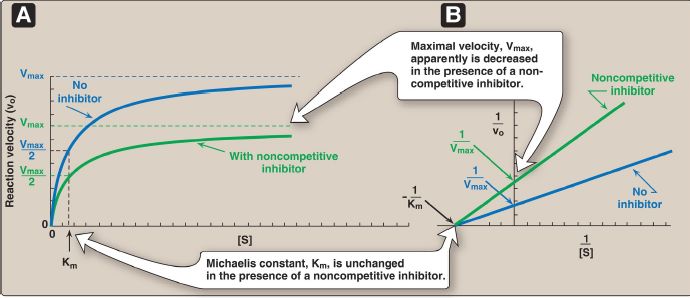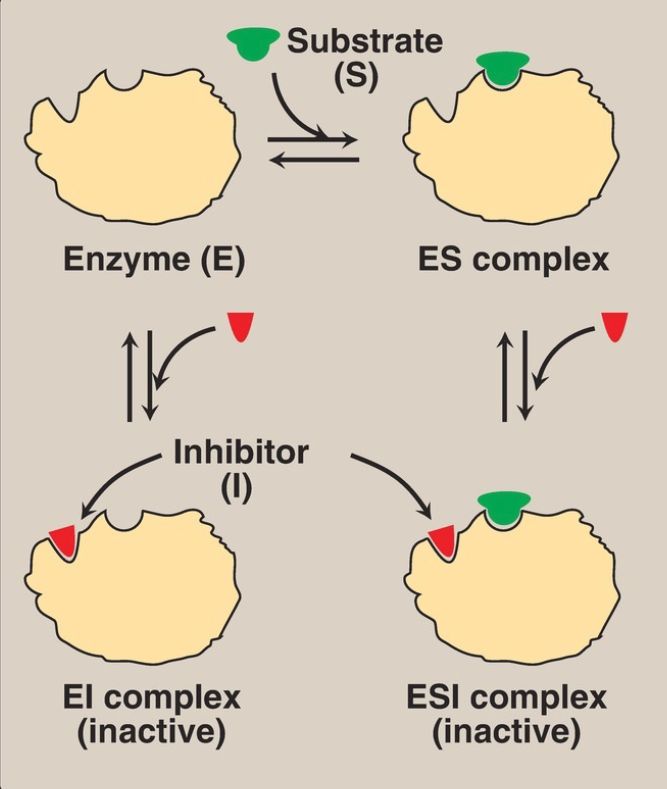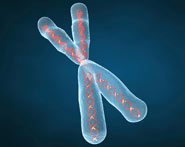


 النبات
النبات
 الحيوان
الحيوان
 الأحياء المجهرية
الأحياء المجهرية
 علم الأمراض
علم الأمراض
 التقانة الإحيائية
التقانة الإحيائية
 التقنية الحيوية المكروبية
التقنية الحيوية المكروبية
 التقنية الحياتية النانوية
التقنية الحياتية النانوية
 علم الأجنة
علم الأجنة
 الأحياء الجزيئي
الأحياء الجزيئي
 علم وظائف الأعضاء
علم وظائف الأعضاء
 الغدد
الغدد
 المضادات الحيوية
المضادات الحيوية|
Read More
Date: 8-12-2021
Date: 25-8-2021
Date: 25-8-2021
|
Noncompetitive inhibition
This type of inhibition is recognized by its characteristic effect on Vmax (Fig. 1). Noncompetitive inhibition occurs when the inhibitor and substrate bind at different sites on the enzyme. The noncompetitive inhibitor can bind either free enzyme or the enzyme–substrate complex, thereby preventing the reaction from occurring (Fig. 2).

Figure 1: A. Effect of a noncompetitive inhibitor on the reaction velocity versus substrate concentration ([S]) plot. B. Lineweaver-Burk plot of noncompetitive inhibition of an enzyme. [Note: The slope increases if inhibitor concentration increases.]

Figure 2: A noncompetitive inhibitor binding to both free enzyme and enzyme–substrate (ES) complex.
1. Effect on Vmax: Noncompetitive inhibition cannot be overcome by increasing the concentration of substrate. Therefore, noncompetitive inhibitors decrease the apparent Vmax of the reaction.
2. Effect on Km: Noncompetitive inhibitors do not interfere with the binding of substrate to enzyme. Therefore, the enzyme shows the same Km in the presence or absence of the noncompetitive inhibitor, that is, Km is unchanged.
3. Effect on Lineweaver-Burk plot: Noncompetitive inhibition is readily differentiated from competitive inhibition by plotting 1/vo versus 1/[S] and noting that the apparent Vmax decreases in the presence of a noncompetitive inhibitor, whereas Km is unchanged (see Fig. 1).
[Note: Oxypurinol, a metabolite of the prodrug allopurinol, is a noncompetitive inhibitor of xanthine oxidase, an enzyme of purine degradation ]



|
|
|
|
مقاومة الأنسولين.. أعراض خفية ومضاعفات خطيرة
|
|
|
|
|
|
|
أمل جديد في علاج ألزهايمر.. اكتشاف إنزيم جديد يساهم في التدهور المعرفي ؟
|
|
|
|
|
|
|
العتبة العباسية المقدسة تقيم ندوة علمية عن روايات كتاب نهج البلاغة
|
|
|